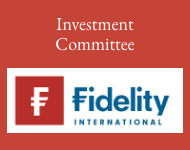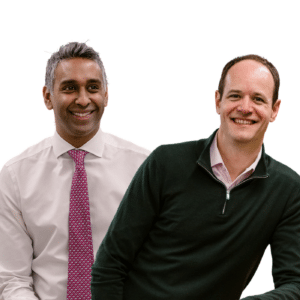Why you should listen to the interview: This episode provides a behind-the-scenes look at how the WS Canalise Diversified Monthly Income fund operates, blending equities, bonds, and alternative assets. The co-managers explain their strategies to deliver reliable monthly income, making it a suitable option for both growth investors and those looking to invest through retirement.
This interview was recorded on 14 October 2024. Please note, answers are edited and condensed for clarity. To gain a fuller understanding and clearer context, please listen to the full interview.
Interview highlights:
Designed for retirement
“So this fund was designed for retirement. Although we have found it works really well for growth investors as well. And given it was designed for retirement we wanted it to have a lower unit price volatility and a smoother monthly income. We thought these were good characteristics for that type of investor. We’re seeking to preserve and grow that monthly income in inflation adjusted terms as well as to provide lower kind of capital volatility.
“We’re firstly trying to reduce the expected volatility of the fund by investing in a very diversified range of asset classes and instruments with very different return profiles. And we felt that putting it into the 20-60% shares sector was the best place for that because that’s the right amount of volatility that we thought would suit this type of investment. And we wanted to invest across as many asset classes as we could while still maximising expected total return.
“So we’re investing not only in sort of the more ‘vanilla’ equities and investment grade fixed income bonds, but we’ve also got some allocation to alternatives and real estate investment trusts. We’ve also got a little bit invested in high yield bonds, but not too much because I want to keep it diversified. And we’ve even had some interesting things such as mandatory convertible shares, which sit within the equity portfolio, which are essentially equities which have boosted their dividends at the expense of a little bit of capital. But it allows us to access perhaps some interesting growth names that otherwise we couldn’t do while still maintaining a high income from those within those portfolios.”
Increased growth exposure in the portfolio
“How do we set the scene for the equity portfolio, when bond yields are very high? It allows us to hold more growth within the equity portfolio and still meet our needs. And when bond yields are very low, it’s the opposite.
“Now, bond yields certainly in this fund are quite high and so we’ve been able to increase our growth allocation within the equity portfolio. And tech is just a part of that theme, although it’s quite a big part. And, of course, given the success of tech over the last two or three years in particular with the AI kind of space pushing it this year, it’s been an interesting place to be.
“Now we haven’t played Nvidia and I’ll say that now. But we’ve played really across the space, we’ve played in a series of what we deem to be high quality names from Microsoft and Amazon at one end down to TSMC. But also Cadence Design Systems, which is a software design company that’s a bit more mid-cap in the US, but all very high quality, all having fairly similar kind of share price charts if you want to call it that over the last 12 months. And they add up to around 10% of the fund, which is probably our biggest allocation at the moment. And given that most of them now yield less than 2% that is a theme that’s still running.”
Keeping technology “sensible”
“I find it quite interesting. It’s the only theme in the world that’s really worked for fund managers for the last two years. And if you weren’t in it, then you were feeling a bit sorry for yourself and if you’re in it, you were feeling a bit too clever for yourself. And so I’ve always been very kind of keen that we keep it at a very sensible level in the portfolio, particularly for an income fund.
“And so although tech has gone up and down, we took it down by a percent in the summer, it’s still only 10% of the whole portfolio even now, even though some of those names have gone up several hundred percent since we first held them. Microsoft in particular is the same weight now as it was when we launched in 2019, even though it’s probably doubled and then doubled again in that period because we are quite disciplined about keeping the weight down.
“If you’re gonna ask me when the tech bubble or the tech rally is going to to end, I haven’t really got any more idea than you have I’m afraid. But I can see the dynamics for it’s continue are still in place. So for the time being, we’re happy to keep running it, but we have got a very broad exposure across the whole space rather than trying to play one specific sub theme of it.”
National Grid’s US revenue
“National Grid is a utility focus on the transmission of distribution of electricity and gas. It’s a household name that you’ll all know. It sits in the sort of high dividend yield side of the portfolio. It has a yield there of 5.7%.
“Well, interestingly, despite it being this electrical motorway that powers the UK, it does generate half its revenue from the US and more particularly on the Northeastern board where Massachusetts and New York are bigger owners of the electricity transmission pipeline there. What’s interesting about National Grid – and it’s a position we’ve held in the portfolio since inception – is that it’s a well covered dividend from a regulated entity that is actually creating long-term value for shareholders through sensible management.
“The valuation on the name is not demanding, especially when compared to its US peers or US utility peers that trade up much higher PE levels. But we’re also excited as I think about the long-term opportunity for National Grid as clearly both private and state support in the ascendancy for renewable energy sources. Indeed the transition to a more knowledge based economy driven by tech and AI, will require more demand for power. And whether that be data centres or electric cars it feels like National Grid and its power servicing, the picks and shovels shall we say, in that particular long-term growth story is pretty strong multi-year story.”
Conclusion: The managers highlight their strategic asset allocation and the team’s collaboration with global experts to provide an excellent introduction into this fund. With investments ranging from bonds to alternative assets, the fund is positioned to deliver strong, consistent income in a variety of market conditions.
































